Sometimes in life we misread the intentions of our so called “heroes.” We see them as this larger than life people. We see our military, our police, people in our family, and others that we view as people of strength, and the ability to protect us, take care of us and our beliefs, and make our lives better.
What happens when those people aren’t what we think? What if they are a bad cop, a brutal murderer, or some other despicable person playing charades with our emotions. They aren’t at all what they appear.
In a small town along the Connecticut River on April 8, 1814 war erupted in a series of attacks by British military. The War of 1812 had come home to roost especially in the town of Essex. In those days this peaceful little waterside town was known as Pettipaug.
The British brought one hundred thirty-six sailors and marines, brought sheer surprise and devastation after rowing all the way up the Connecticut river from Long Island Sound. It was at the time largest maritime loss of the war brought about at the hands of these men. Twenty-seven vessels were incinerated within 24 hours. Six of those large ships, in the form of privateers, had just been built.
These privateers, for the edification of those who don’t know, were private people that fight using their own ships and with their own money. They did this under the auspices of a “commission.” This commission was also identified as “a letter of marque” empowering them to fight against hostile invaders, known as the British internationally, with like force. They would be allowed to attack invading foreign vessels. This was after the War of 1812…emphasis on war. These captured vessels were considered as legally taken wealth. Why shouldn’t they be judged as such since these pirates were supported by the government, even encouraged.
This was actually very profitable for the privateers. Captured ships would suffer denunciation under the commission the privateers and were operating under. Goods were confiscated and sold, as was the ship, and all the takings were shared by the private sponsors, the actual shipowner, and finally the captains and crew. Of course, bureaucracy got its part as well and a share would always be given to the issuer of the commission.
Robbery at sea was rampant from all points of the compass at the time, and this location was no different. This prolific piracy demanded all merchant ships be armed. Since these ships were already armed, they became what was essentially an auxiliary taskforce to naval operations. There were big advantages to this for the state, allowing them a wide berth for patrolling the waters, and saved them money in their defense budget.
As you might imagine, this dismayed the British considerably.
Okay, there’s your foundation for the rest of the story. So let’s get back to the attack that day over two hundred years ago. The job for the attack fell on the shoulders of Commander Richard Coote. Of course, this is where the story gets good.
So, let’s start this story with Captain Stephan Decatur. This salty captain was well known by virtue of his tactical adventures while at war with France during the Quasi War and the Barbary War.
Decatur commanded the USS United States and seized the HMS Macedonian while patrolling the coast of the Azores and brought the beauty back to New London, Connecticut where it was re-commissioned and then got to hang out with the United States and a third ship known as the USS Hornet in New York harbor. They resupplied the vessels and got ready for a bit of piracy under the guise of a war cruise.
Decatur had information about a powerful enemy squadron anchored and holding station off the coast at Sandy Hook, New Jersey, requiring him to carefully plan his exit. In order to safely withdraw from the harbor, he raced the whole length of ninety miles along the Long Island Sound, aimed directly a point beyond Montauk Point, which was almost accomplished.
He would have met with the open ocean had there not been a small armada of British waiting to cut him off. Not so surprisingly, He was very dismayed, so he came about and headed into New London.
Two very powerful, well-armed forts provided considerable cover and protection from the British. The serious downside to New London was that the British just set up a permanent blockade at that point. Yep, it seemed the British were not a little dismayed. In fact they bloody revenge in their eyes.
Another distinctly dismayed party were the people involved in commerce in the area. Pettipaug’s shipbuilding services had to put a hold on the merchant fleets. This is where the privateer building came into play since the shipbuilding services felt this would be a way to give back and still make a profit.
Yet one more party was extremely dismayed. This party was a very distinctly powerful and the form in this case came from the White House. It was President James Madison.
Madison had been involved for a while and had offered a fifty percent bounty for any sunken or captured enemy ship. Most were dubbed the 74-gunship-of-the-line and were worth a considerable amount of money, and half of that total was a strong inducement to either capture or send a warship to the proverbial Davy Jones’ locker. Seasoned captains quickly became pirates prowling the local waters for enemy ships. Sailors from the Mystic River area started opening up on British ships with everything from fireships (floating bombs that caused severe damage), to semi – submersibles, and even actual submarines.
As it turns out, one way to get the attention of British captain is to set off a bomb underneath their bow. As you might imagine, British captains seemed to take that nature of action very seriously. Such was the case on March 24, 1814 with the HMS La Hogue, and the person providing this immediate attention was Captain Thomas Bladen Capel. While it did indeed get his attention, the ship was not damaged. Capel sent out picket boats to see what could be seen. To have accomplished this it obviously required a boat and that boat had to be relatively small in order to have not been seen. That meant they could not be far away since a small boat would be slow.
Just as sure as a frog wouldn’t bump its behind if it had wings, there was a lone boatman rowing quietly around. The rowing stopped immediately after the British placed him in irons. To punctuate the importance of this man, they named him Torpedo Jack.
Torpedo Jack was in a lot of trouble, and numerous iterations of his immediate future ran through his head. A few of the iterations were not very nice, and in fact most of them were scary. With the light of his future days dimming rapidly, he came up with a plan.
Jack knew the waterway extremely well, and so he offered his piloting services. The Connecticut River was his backyard, and the British were well aware of the ongoing shipbuilding at Pettipaug, now known as Essex, and the river was not kind to deep draft boats. With that in mind Torpedo Jack yet once again had the attention of Captain Capel. Vengeance is mine sayeth the angry Captain that got bombed.
There was a lot to be overcome even with a knowledgeably pilot. First was the six miles that had to be covered, with waters that were rife with shallows. Secondly, it was guarded by a fort at the mouth, not to mention the Saybrook Bar.
The Saybrook Bar is a considerable area of sand shoals that prevented the deep draft warships from entering Pettipaug unless it was navigated perfectly. Capel was smart though, and after considerable thought about personnel, he put together a not so small flotilla. The final product of his deep thought was the assemblage of 136 officers and men led by 32 year – old Commander Richard Coote of the HMS Borer. Plans were laid and on the night of April 7th the Borer was escorted by the HMS Sylph and sailed from New London to the mouth of the Connecticut River. So far, so good. It was time for the British to take their turn to become pirates.
At 9:45 the adventure seriously began. Six very heavily armed ship’s boats set off for the target. These crafts made it over the bar easily and began traveling up the river. A trek of six miles begins with the first paddle stroke. At 3:30 in the morning, and after many paddle strokes, they had made the trip via Saybrook Point so they could storm the fort, only to find it abandoned.
This was going to be tough on the villagers since they never figured they would be attacked via the river. No contingencies had been made, so the British had the run of the affair. The townies were outmanned and outgunned and with a short exchange of gunfire, the clash was short lived and the out – gunned Americans were driven to withdraw.
The docks were loaded with potential targets including the six newly built privateers. Coote decided to pirate his version of the spoils. He chose a schooner called the Eagle and a brig dubbed the Young Anaconda and burned the rest.
Coote had wrapped up his devastating attack by 10am and began the trip back down the river with his two prized privateer ships. Two hours in Coote’s band of British pirates ran into trouble when the Young Anaconda found solid ground stopping the watery trek to the mouth of the river. This was arrow to the heart of the task.
By this time the Americans had began emergency mobilization on both sides of the river. Coote was becoming aware of what he expected to happen. He anchored the Eagle and began to evaluate the rapidly degrading situation. Cannon were showing up all over the bluffs just south of him, and right on either side of his path. The artillery was an ominous development. He knew he wouldn’t be able to traverse that particular gauntlet, so new plans had to be laid…a plan “B” was needed immediately.
Well, the Young Anaconda did not survive. Coote burned it where it sat aground, ensured all vessels were at secure anchor, and waited for nightfall in the hope he could scoot on by the armaments. While anchored, the Americans, being charitable and cautious, rowed out a surrender ultimatum that was promptly rebuffed.
Coote didn’t have a naval leg to stand on. When later asked about it he stated, “I informed them that I held their power to detain us at defiance.”
Interesting answer considering the circumstances.
Warriors were en – masse by the time the sun was setting. The Americans knew what Coote was up to and wanted to get a six – pounder closer to the boats at anchor. Even state and federal officials were on site.
As the clock rolled to seven, and darkness had shed its skin of light, Coote moved his men back to the ship’s boats, and in the blackness they rowed to safety after burning the last privateer. If they couldn’t have it, no one would. The trip to safety cost Coote two dead and two injured, but he made it.
The British kept attacking all along the coast, pirating anything considered bounty. Stonington was bombarded, Washington was burned, and Baltimore was attacked. The Battle of New Orleans ended the war, but did the British piracy end with the end of the war? No, far from it.
In the immortal thought of leaving them wanting more, and so as to not bore you with a very long article, I will finish this here, for now. If you are really curious about further British piracy on the states, read the book, The British Raid on Essex, the Forgotten Battle of the War of 1812.
Much of this information was the result of research that included primarily Sea History Magazine and the article written by Jerry Roberts, and the author of the afore mentioned book, to whom I give considerable thanks for remembering and documenting this subject.
Article with permission by Captain Lee Clymer


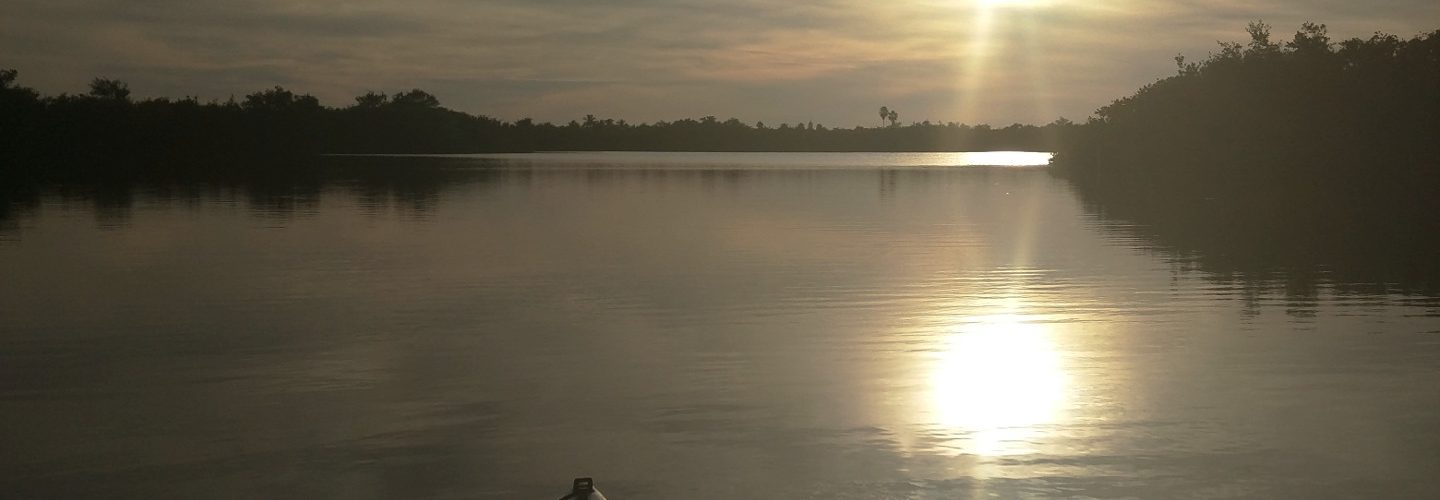
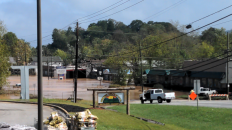
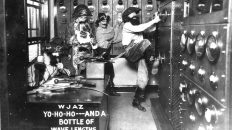
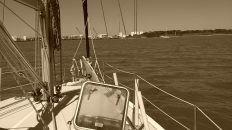


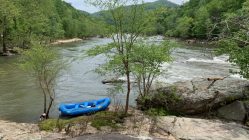
Add comment